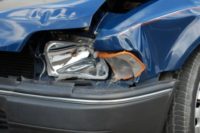“The NTSB has been concerned about the integrity of cargo tanks carrying hazardous materials for more than 40 years,” said NTSB Chairman Deborah A. P. Hersman. “There are more than 1,300 rollovers a year involving cargo tank motor vehicles. These accidents pose a significant safety risk to both the vehicle driver and to the motoring public.”
The NTSB determined that the probable cause of a 2009 rollover accident involving a truck-tractor and cargo tank semitrailer was the driver’s excessive and rapid evasive steering maneuver after he began to encroach upon the occupied left lane.
Contributing to the rollover was the driver quickly steering the combination unit from the right shoulder to the right lane; the reduced cross slope of the paved right shoulder; and the susceptibility of the combination unit to rollover because of its high center of gravity.
The 2006 Navistar International truck-tractor in combination with a 1994 Mississippi Tank Company MC331 specification cargo tank semitrailer (the combination unit), operated by AmeriGas Propane, L.P., rolled over about 10 miles northeast of downtown Indianapolis, IN. The tanker was loaded with 9,001 gallons of liquefied petroleum gas, which escaped, formed a vapor cloud, and ignited. The accident and subsequent fire injured the truck driver and the driver and occupants of the passenger car.
The NTSB investigation revealed that the truck driver, who was negotiating a left curve from the right lane of the connection ramp, began to encroach upon the left lane that was occupied by a passenger car. The truck driver responded to the car’s presence by over steering his vehicle, which caused it to veer to the right and onto the paved right shoulder. Moments later, the truck driver steered ounterclockwise to redirect the truck from the right shoulder and back to the right lane. This series of driver inputs, steering hard to the right and then back to the left, led to the cargo tank rolling over, detaching from the truck, penetrating a steel guardrail, and colliding with and entirely displacing a bridge pier column that supported the I-465 overpass.
The NTSB issued 20 safety recommendations including the following:
To the Federal Motor Carrier Safety Administration and the Pipeline and Hazardous Materials Safety Administration
- Implement a comprehensive rollover prevention program.
To the Pipeline and Hazardous Materials Administration
- Analyze available accident data to identify cargo tank designs that are susceptible to failure for developing accident performance standards for newly-manufactured cargo tanks.
To the National Highway Traffic Safety Administration
- Develop stability control system performance standards for all commercial motor vehicles and buses that have a gross vehicle weight rating greater than 10,000 pounds as well as to establish comprehensive minimum performance standards for all newly manufactured cargo tank motor vehicles.
To the Federal Highway Administration and the American Association of State Highway and Transportation Officials
- Develop guidelines for identifying and protecting bridges that are vulnerable to collapse if struck by errant heavy commercial vehicles.
A synopsis of the NTSB report, including the probable cause, findings, and a complete list of safety recommendations, is available at


